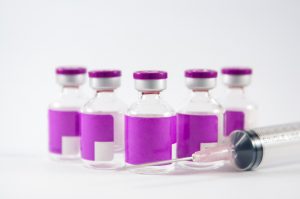
Prefab facilities could feed the need for COVID vaccine capacity, say Univercells and ExytePrefab facilities could feed the need for COVID vaccine capacity, say Univercells and Exyte
Exyte and Univercells Technologies have teamed to develop and construct modular GMP vaccine manufacturing plants that can be deployed in a third of the time of conventional facilities.

Exyte and Univercells Technologies have teamed to develop and construct modular GMP vaccine manufacturing plants that can be deployed in a third of the time of conventional facilities.
As vaccines against COVID-19, caused by the SARS-CoV-2 virus, begin to move through the clinic at an unprecedented speed, the question is rising as to how industry can scale-up production. At the heart of this is ensuring capacity is available to produce millions, if not billions, of doses of a potential vaccine.
According to Tania Pereira Chilima, deputy chief technology officer of Univercells Technologies, the demand for vaccine doses arising from the pandemic puts a strain on the current capacity of vaccine manufacturers to accommodate such large demands.

Image: iStock/khuntapol
“Hence, the intensified technologies have a significant role to play here as these enable large-scale manufacture within a reduced footprint,” she told this publication. “Moreover, flexibility is an important factor to consider as there are a number of vaccine candidates under development and, therefore, it’s important to have flexible technologies that can accommodate different processes in order to accelerate the response time while minimizing investment risks.”
It is in this environment that Univercells Technologies has teamed with Exyte to create a standardized prefabricated plant to produce large quantities of vector-based vaccines and live attenuated vaccines. The partnership combines Exyte’s prefabricated modular construction system, ExyCell, with Univercell’s NevoLine biomanufacturing platform.
“Together, these disrupting technologies provide a solution for rapid deployment of large-scale capacities in record timelines,” said Pereira Chilima. “The scale-down models of the scale-X intensified bioreactor that sits at the center of the NevoLine platform will enable companies to rapidly initiate the development and clinical trial manufacture for COVID-19 vaccines and predict the capacity required at commercial scale during the early stages of process development, enabling parallelization of capacity planning/ facility design & construction and R&D activities.”
Flexibility and low CAPEX
She added that when initiating vaccine development and manufacturing, the choice of the technology is crucial to ensure a smooth transition from development to commercialization.
“In the case of a pandemic such as COVID-19, the chosen technology needs to bring flexibility in accommodating numerous vaccine candidates which are under development. Moreover, once production of COVID-19 doses is decreased as the population becomes immunized, it is crucial that flexibility is also extended to other vaccine targets to rapidly address other disease outbreaks.
“Most conventional technologies rely heavily on a scale-out approach to product manufacture which, in cases such as the COVID pandemic, becomes challenging or even impossible to support the market demand and accommodate different process designs due to the physical capacity required. Other traditional processes employ large scale bioreactors and stainless-steel equipment, which require significant capacity and result in high CAPEX levels.”
Need for speed
The combined offering can, according to the firms, drastically reduce the building and commissioning of GMP-compliant vaccine production plants, which again will suit the rapidly evolving COVID-19 vaccine space.
“A precise timeline for the realization of a vaccine facility, from start to the first commercial batch, is a function of variables such as building licenses, drug regulatory authorities’ approval cycle, choice of the process technology, and lead times of the main production equipment,” Luca Mussati, vice president of Pharmaceuticals & Biotechnology at Exyte told us.
“In general, the advantage of prefabricated facilities consists of the parallelization of the construction of process skids, building, and cleanrooms, whereas many of these activities can only be done in sequence for traditional buildings. Looking at industry benchmarks, the time savings of an ExyCell and Nevoline unit can reach 6 – 18 months in total.
“As a broad indication, for a brownfield facility with ExyCell cleanrooms erected inside an existing building, the time to go from start to the operational qualification (OQ) of cleanrooms and utilities can range from 7 to 9 months. For a greenfield ExyCell facility requiring a new building, this time can go from 9 to 12 months. The total time to produce the first commercial batch could be estimated to be 10-15 months for a brownfield and 14-18 months for greenfield, compared with the 30-36 months of a conventional stick-built vaccine facility of similar capacity.”
As such, Mussati said the optimal strategy for COVID-19 vaccine developers would be to start the construction of flexible, multi-purpose production units as soon as possible, to build production capacity in time to launch the production of the successful vaccine candidates, once clinical trials will be completed over the course of 2021.
“Exyte’s technology and the NevoLine platform have already generated several advanced discussions with key actors of the COVID-19 crisis and the collaboration between both companies is expected to have a large impact on this global health issue.”
About the Author
You May Also Like
schedl_b_and_w.jpg?width=100&auto=webp&quality=80&disable=upscale)
schedl_b_and_w.jpg?width=400&auto=webp&quality=80&disable=upscale)



